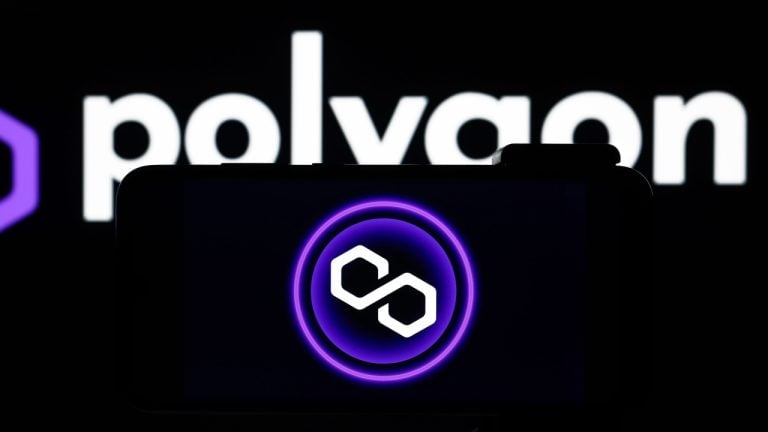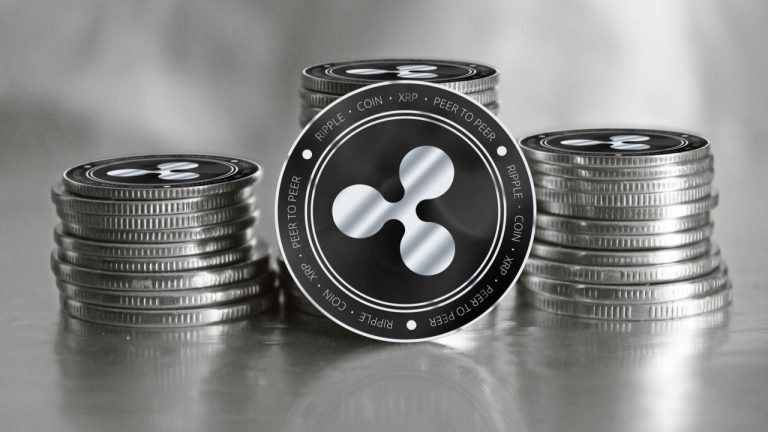 Polygon was one of Tuesday’s notable gainers, as the token rose to its highest point since mid-September. Today’s surge saw prices of the cryptocurrency rise for a third straight session. Cosmos also extended recent gains, climbing to its strongest point in recent days. Polygon (MATIC) Polygon (MATIC) was a notable gainer on Tuesday, as the […]
Polygon was one of Tuesday’s notable gainers, as the token rose to its highest point since mid-September. Today’s surge saw prices of the cryptocurrency rise for a third straight session. Cosmos also extended recent gains, climbing to its strongest point in recent days. Polygon (MATIC) Polygon (MATIC) was a notable gainer on Tuesday, as the […] Xrp rebounded from recent drops in price on Friday, as the token surged by nearly 10% in today’s session. Cosmos was another notable gainer, as it snapped a four-day losing streak. Overall, cryptocurrency markets were mostly higher, with the global market cap up nearly 5% as of writing. XRP XRP was one of today’s big […]
Xrp rebounded from recent drops in price on Friday, as the token surged by nearly 10% in today’s session. Cosmos was another notable gainer, as it snapped a four-day losing streak. Overall, cryptocurrency markets were mostly higher, with the global market cap up nearly 5% as of writing. XRP XRP was one of today’s big […]
A public patch fixing the exploit is scheduled to be released tomorrow.
On Thursday, Ethan Buchman, co-founder of interblockchain communication (IBC) ecosystem Cosmos, said that a 'critical security vulnerability' had been discovered that 'impacts all IBC-enabled Cosmos chains, for all versions of IBC.' Buchman assured that steps have already been taken to ensure that all major public IBC-enabled chains have been patched, stating:
"A chain is safe from the critical vulnerability as soon as ⅓ of its voting power has applied the patch. Chains should still seek to patch to ⅔ as quickly as possible once the official patch is released."
A public version of the patch will be released in the CosmosSDK (software development kit) v0.45.9 and v0.46.3 tomorrow at 14:00 UTC. Buchman recommends that all chains and validators apply it immediately upon release, and that chain-halting is not required for it to take effect.
The issue appears to have come to light after core developers of Cosmos and Osmosis (the leading decentralized exchange on Cosmos) ramped up security audits in light of a $100 million cross-chain bridge exploit on BNB Chain on October 6.
Cross-chain bridges solve a variety of problems in decentralized finance by allowing users to port digital assets across multiple protocols. However, they tend to be more complex than regular decentralized applications, and if the source code is copy-and-pasted across protocols, the vulnerability can be amplified dramatically.
Nevertheless, the vast majority of cross-chain bridge hacks this year, such as the Ronin and Nomad bridge exploits, have occurred on Ethereum Virtual Machine blockchains. On the contrary, security breaches on chains in the Cosmos' IBC ecosystem have been far and few in between. There are currently about 45 blockchains built using the Cosmos SDK.
 Xrp, the token formerly known as ripple, rose close to a five-month high on Saturday, despite the current red wave sweeping through markets. The token was trading marginally above a ceiling of $0.525, as bulls attempted to recapture recent highs. Cosmos was also higher, nearing a breakout of a key resistance point. XRP XRP surged […]
Xrp, the token formerly known as ripple, rose close to a five-month high on Saturday, despite the current red wave sweeping through markets. The token was trading marginally above a ceiling of $0.525, as bulls attempted to recapture recent highs. Cosmos was also higher, nearing a breakout of a key resistance point. XRP XRP surged […]
Ethereum (ETH) co-founder Anthony Di lorio says that besides Bitcoin (BTC) and Ethereum, he is also keeping his eyes on Cardano (ADA), Polkadot (DOT) and Cosmos (ATOM). In a new interview on Kitco News, Di lorio says he is stocking up on the three smart contract altcoins because of the people working on these projects. […]
The post Ethereum Co-Founder Reveals He Is Amassing Cardano, Polkadot and One Additional Smart Contract Altcoin – Here’s Why appeared first on The Daily Hodl.

The crypto finance platform Bankless is detailing several digital assets and sectors that traders may want to keep an eye on for the next bull market. In a new update to subscribers, Bankless says even though the digital assets industry feels “rudderless” right now, the future is bright. The outlet says it’s closely watching the […]
The post Here Are Some Top Crypto Projects To Track for the Next Bull Market, According to Bankless appeared first on The Daily Hodl.

Speaking with Cointelegraph, Circle’s vice president of Product Joao Reginatto emphasized that devs soon won’t care what blockchain they build on, as interoperability will be key.
USD Coin (USDC) issuers Circle have announced that it will soon roll out its stablecoin across five additional networks including Polkadot, Optimism, NEAR, Arbitrum and Cosmos.
The firm first dropped the news at the Converge22 event on Sept. 28, and noted that support for most of these blockchains will be rolled out by the end of 2023, while USDC on Cosmos will go live at the start of 2023.
In a Sept. 28 statement, Circle’s vice president of Product Joao Reginatto emphasized that the expansion of USDC will provide “greater liquidity and interoperability within the crypto economy,” especially for the commercial sector.
“Extending multi-chain support for USDC opens the door for institutions, exchanges, developers and more to innovate and have easier access to a trusted and stable digital dollar,” he said.
3/ Upon launch, developers will be able to use Circle APIs for fiat on/off-ramps to and from USDC in their products, as well as programmable wallets infrastructure.
— Circle | #ConvergeSF22 | Sept 27-30 (@circlepay) September 28, 2022
In a follow-up interview with Cointelegraph, Reginatto outlined that while Circle initially built USDC on Ethereum as move of the development and activity was happening there, it always had a vision that the future would be a “multichain world.”
As such, Circle is expanding USDC support under the premise of devs preferring interoperability over working with just one network:
“We knew already at the time that there were a lot of interesting things happening in other ecosystems, and we thought that over time developers and application builders; they are not going to be so much concerned about the Layer 1 or the Layer 2 infrastructure that they're using.”
“They will want interoperability, they will want flexibility to be able to port their solutions across ecosystems,” he added.
Reginatto did note however, while Circle is pushing ahead with expanding USDC support, given the current size of the stablecoin — with a market cap of $48.9 billion — the firm won’t just jump behind any network. He outlined that Circle conducts a lot of due diligence before it selects the next blockchain to work with.
“There's a lot of risks that we have now that we perhaps didn't have two or three years ago. So we take it with a lot of diligence. We have a team of folks across all the functions in the company kind of assessing all these ecosystems and prioritizing them over time.
Once the extra support is officially rolled out, USDC will be available on a total of 13 blockchains. In comparison, Circle’s main competitor Tether currently lists USDT support for eight networks on its website.
“Upon launch, developers will be able to use Circle APIs for fiat on/off-ramps to and from USDC in their products, as well as programmable wallets infrastructure,” Circle stated on Twitter.
Related: Circle CEO says blockchain industry is transitioning from dial-up to broadband phase
Commenting on the use cases for USDC and stablecoins in the current context of crypto, Reginatto highlighted key avenues such as marketplace payouts, remittances, and global settlements for financial institutions.
“There's no real good interoperability across all these banking systems and regional rails. Stablecoins have a really, really good value proposition for that.”
“Stripe utilizing USDC rails for marketplace payouts. Embedding that as part of their marketplace payouts products, just being able to reach people that their customers need to pay out, that with traditional rails they can't reach. So that there is clear concrete value that the substrate can deliver for those kinds of use cases,” he added.
 While crypto markets were mostly lower on Wednesday, quant rallied to a six-month high earlier in the day. Today’s move came as the token broke out of a key resistance level, en route to its strongest point since March. Cosmos was another notable mover, dropping for a second straight session. Quant (QNT) Quant (QNT) rose […]
While crypto markets were mostly lower on Wednesday, quant rallied to a six-month high earlier in the day. Today’s move came as the token broke out of a key resistance level, en route to its strongest point since March. Cosmos was another notable mover, dropping for a second straight session. Quant (QNT) Quant (QNT) rose […]